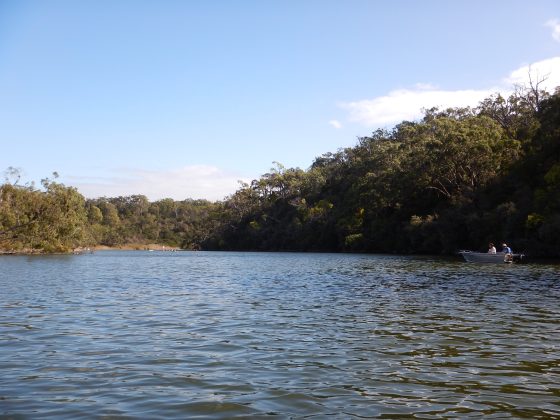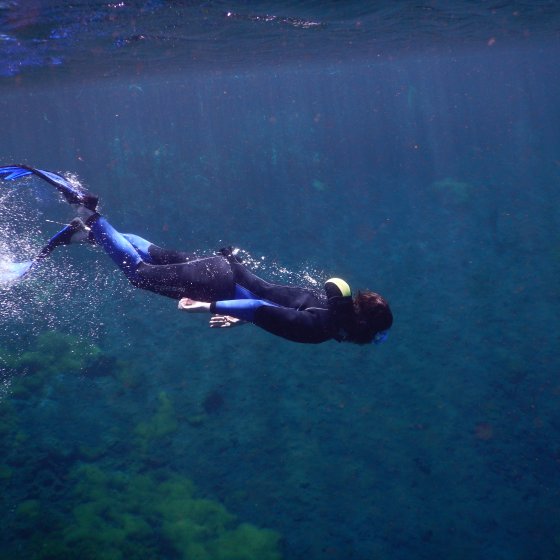- Home
- Environmental Themes
- Waters
- Pressures & Responses
- Resource Use
Resource Use
Expanding Population
Pressures
- Increasing demand for water including for potable and household use and for producing food.
Impacts
- Places pressure on our natural water resources and reduces water availability for the environment.
Responses
- A number of councils have instigated MAR schemes where stormwater runoff is captured, treated and stored in the aquifer for later reuse. There are over 40 MAR schemes operating across the Greater Adelaide metropolitan area that have injected 48 GL of water for non-potable uses. These often have extensive pipe networks (purple pipe) for delivery of the harvested water for use in parks, gardens, schools and other green open spaces. In some cases this is supplemented with recycled wastewater.
- A number of community wastewater management systems and SA Water have recycled wastewater schemes where treated wastewater is piped and used for non-potable water supply.
- Construction and operation of desalination plants by SA Water help secure water supply and take the pressure off natural water resources especially in times of drought.
- New dwellings with a roof size of over 50 m2 must include an extra water supply, such as a rainwater tank, which is plumbed to a toilet, water heater or cold laundry tap.
Opportunities
- Support installation of systems that allow for greater capture and reuse of rainfall where it falls. For example, increase the holding capacity of rainwater tanks required to be plumbed to houses in new developments.
- Encourage the installation of water efficient devices in new developments and existing residential properties and businesses.
- Provide better education on how water can be used more efficiently in households, industry and businesses.
- Ensure that water allocation is adapted and responsive to climate change implications.
- Provide better education on the ‘interconnectedness’ of groundwater and surface water, so people understand the implications of groundwater overuse on surface water flow.
Check out
Recreation and Tourism
Pressures
- For example, activities undertaken during boating, camping and fishing.
Impacts
- Ecological damage from people depositing waste and trampling on riparian vegetation.
- Boat wakes, that is, waves caused by boats, may result in bank erosion or impact native plants and animals.
- Overfishing and impacts on native species.
- Potential pollution of water supplies from human access, eg SA Water reservoirs.
Responses
- Provision of designated camping areas along waterways.
- Fishing limits are applied to protect fish stocks.
- Restrictions are in place on the number and type of recreational fishing gear to protect non-targeted species and over-catch. For example, the banning of opera house nets was recently introduced to further protect the Platypus and other air-breathing aquatic animals.
- Restrictions on activities that can be undertaken in reservoirs and employment of reservoir rangers to monitor activities.
Opportunities
- Creation of speed zones for vessels within sensitive areas or areas at risk of bank erosion to minimise impacts from boat wakes.

Water Extraction
Pressures
- Use of water including water from dams, bores and watercourses for irrigation and other purposes.
- Extraction of water from groundwater, including the Great Artesian Basin, for agriculture and other industries such as mining.
Impacts
- Reduced water availability for the environment and groundwater resources.
- Water use from the Great Artesian Basin (GAB) may impact groundwater supply that feeds springs located in this region. This will also have an impact on plants, animals and industries (tourism and pastoralism) that rely on these springs and the GAB for water. The springs also have a deep cultural significance for Aboriginal people.
Responses
- Landscape Boards are responsible for the implementation and management of water allocation plans. These plans describe the environmental water requirements of water-dependent ecosystems (WDEs) in prescribed areas and set sustainable take-limits and buffers around significant WDEs and policies such as low flows that seek to achieve flows for WDEs.
- Compliance monitoring of water use from dams, bores and watercourses is undertaken by DEW. In 2022-23, 1,881 site visits were conducted by DEW. In total, 12.1% of the 14,253 water licences in South Australia received a site visit associated with a compliance activity, and 85% of those who received a site visit were found to be compliant.
- Great Artesian Basin Springs: a Plan for the Future identifies threats to the GAB and associated springs, and provides monitoring and adaptive management plans.
- Northern Water Supply project includes building a desalination plant and pipelines to meet water demand in the northern region of South Australia.
Opportunities
- Installation of more water efficient irrigation systems that minimise loss of water (for example, due to evaporation or overwatering).
- Increased provision of non-potable sources of water such as stormwater or treated wastewater for irrigation to take the pressure off natural water sources.
